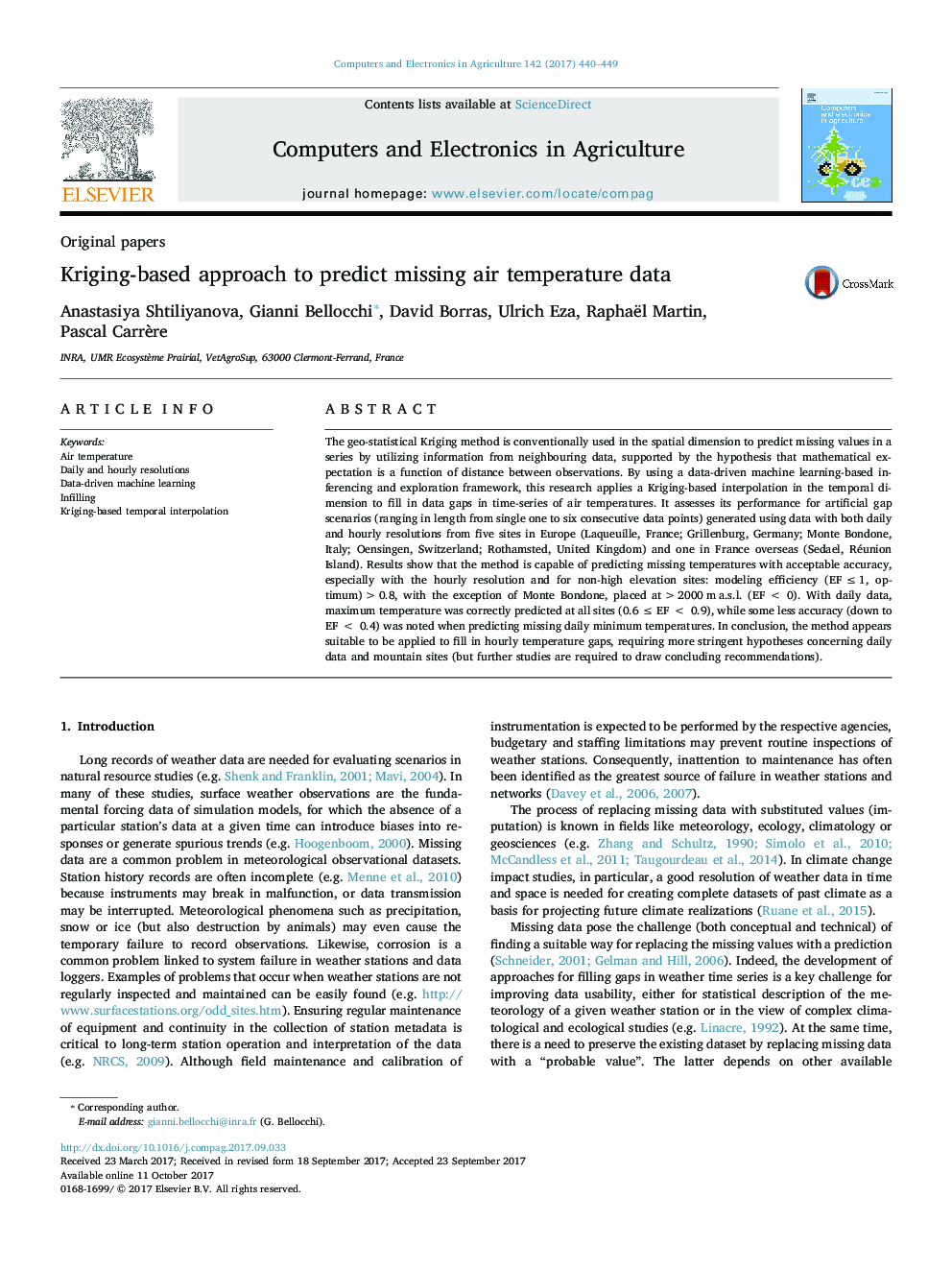| کد مقاله | کد نشریه | سال انتشار | مقاله انگلیسی | نسخه تمام متن |
|---|---|---|---|---|
| 6458723 | 1361745 | 2017 | 10 صفحه PDF | دانلود رایگان |
- We fill in gaps in time series with Kriging interpolation and learning process.
- We explore the properties of Kriging to impute missing data in air temperature series.
- We show accurate predictions of hourly temperatures for non-high elevation sites.
- We integrate the procedure to a platform for vulnerability assessment in agriculture.
The geo-statistical Kriging method is conventionally used in the spatial dimension to predict missing values in a series by utilizing information from neighbouring data, supported by the hypothesis that mathematical expectation is a function of distance between observations. By using a data-driven machine learning-based inferencing and exploration framework, this research applies a Kriging-based interpolation in the temporal dimension to fill in data gaps in time-series of air temperatures. It assesses its performance for artificial gap scenarios (ranging in length from single one to six consecutive data points) generated using data with both daily and hourly resolutions from five sites in Europe (Laqueuille, France; Grillenburg, Germany; Monte Bondone, Italy; Oensingen, Switzerland; Rothamsted, United Kingdom) and one in France overseas (Sedael, Réunion Island). Results show that the method is capable of predicting missing temperatures with acceptable accuracy, especially with the hourly resolution and for non-high elevation sites: modeling efficiency (EF â¤Â 1, optimum) >0.8, with the exception of Monte Bondone, placed at >2000 m a.s.l. (EF < 0). With daily data, maximum temperature was correctly predicted at all sites (0.6 â¤Â EF < 0.9), while some less accuracy (down to EF < 0.4) was noted when predicting missing daily minimum temperatures. In conclusion, the method appears suitable to be applied to fill in hourly temperature gaps, requiring more stringent hypotheses concerning daily data and mountain sites (but further studies are required to draw concluding recommendations).
Journal: Computers and Electronics in Agriculture - Volume 142, Part A, November 2017, Pages 440-449
